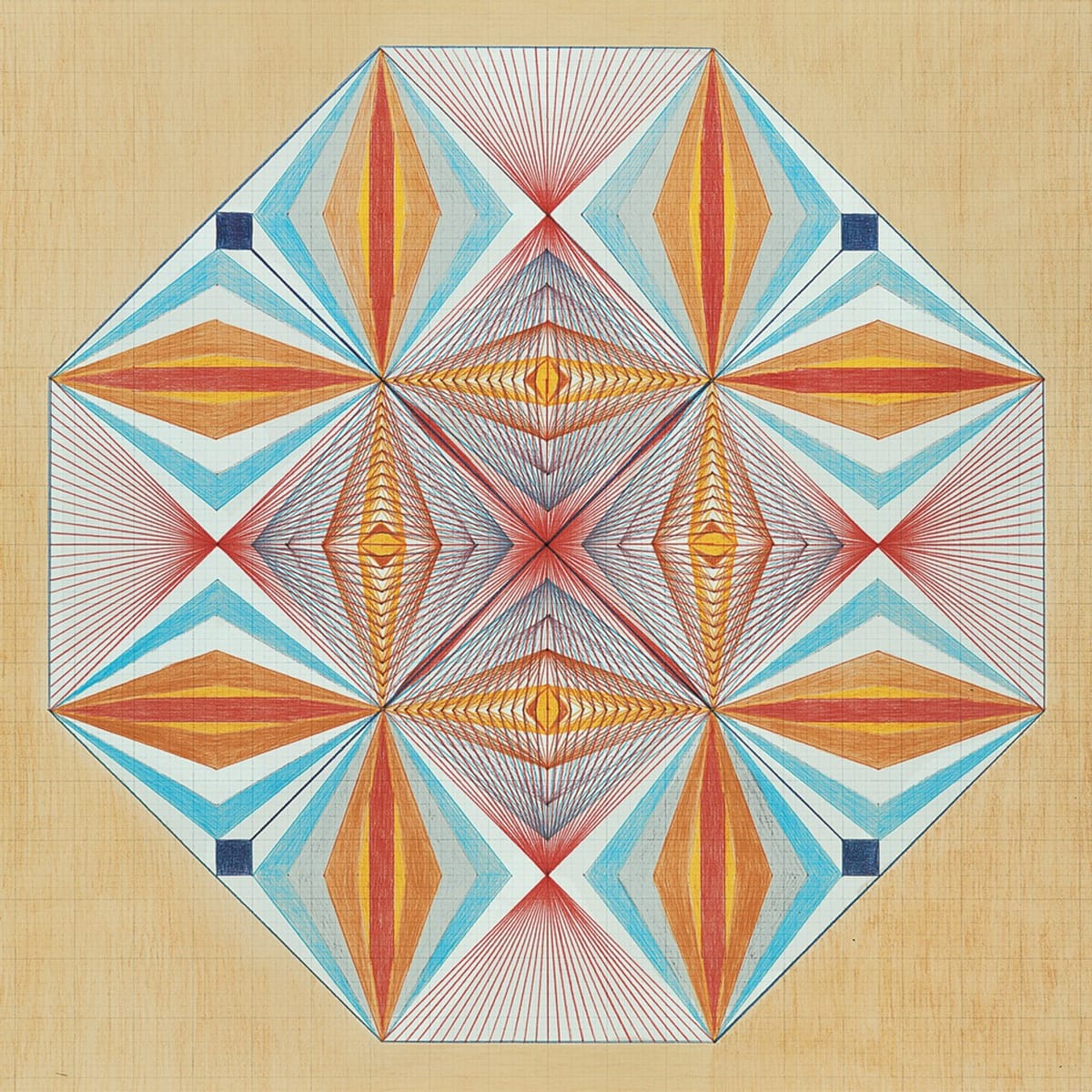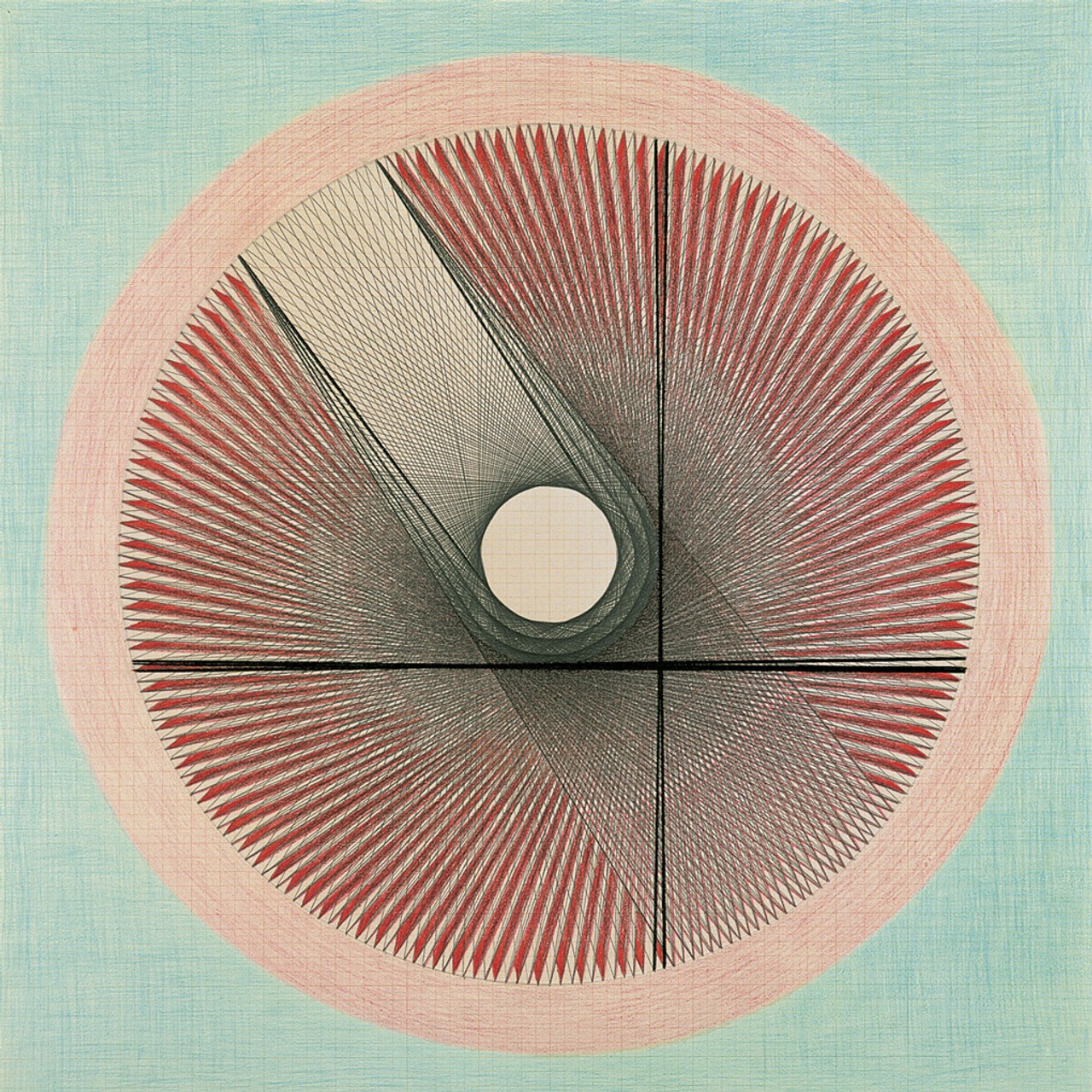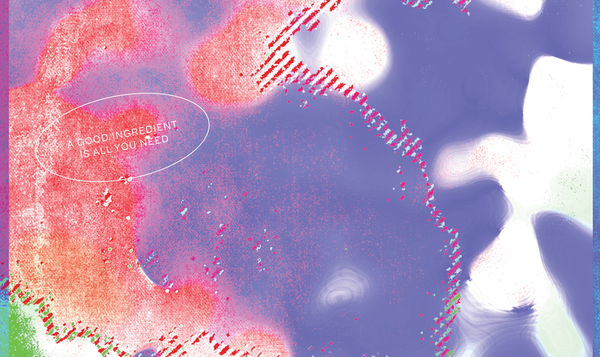About liquid constellations, motion & emergence, perceiving and delightful coffee ☀︎

Our human tendency is to separate science and art as different modalities – But let’s explore this challenge – Are they not singular?
Swiss naturopath and somewhat of a mystic, Emma Kunz, would work in secret with pendulum in hand, creating kaleidoscopic visions from the ‘blueprints’. After asking a question, Emma would let the pendulum go in earnest, watching for coordinates mapped out in the movements. From there, she would create connections from dots mapped in pencil with colour and shape, building intricate holographic-like visions inspired by a reverence for the architecture found in nature.

Emma Kunz work No.20
These artworks were never intended to be shown as such, (she was an outsider in the art world and kept all 400 works with her) but 10 years after her death (1973) her works were first exhibited, and 60 of them were shown as recently as 2019 at the Serpentine in London.
Please go search for Emma Kunz, and you’ll be rewarded with intricate paper and pencil crayon constellations depicting time and space unfolding in myriad ways. These works were her way of making sense of the unanswerable. What’s impressive about this is she was doing abstraction work before anyone else (yup, even before Kandinsky…look him up too, he’s neat). In a time where art meant realism and matter-of-fact commissions, Emma’s drawings were entirely exploratory and counterculture.
Emma’s pendulum drawings may be woo woo to some, but there’s another craft/ science experiment mashup, placed at the altar of nature with strikingly useful visuals. Soil chromatography, once a folk activity to measure nutrient content and density in the dirt, is achieving a tiny renaissance in Cali, Colombia with Agronomist Jairo Restrepo at the helm.
These dirt works, aided by silver nitrate as the suspension medium, capture a snapshot in time underground, where it’s a sort of constellation of what’s below our feet.
During a Soil Chromatography course at Milkwood Permaculture farm in Australia, Eugenio Gras (from agroecology experts at Mas Húmus in México) explains,
“Finely ground soil is absorbed by filter paper that has been prepared with silver nitrate, and thanks to capillary action, a ‘picture’ of that soil appears.”
Anyone who’s lived in a colder climate and had the unfortunate inevitability of soaked jeans can attest – The road salt isn’t immediately apparent, but wicks up your jeans and casts a crystalline crown a few inches up your ankles (something I don’t miss since moving to the west coast). So it’s kind of like that, except with all the good life stuff of whatever is in the soil sample.

These opulently layered fossil-looking pictographs that result answer the question “how alive is this soil? What’s in this soil?” and the more beautiful the striations, the better. If you can get access to the ingredients, making chromatographs offer a way to see precisely what you’re working with if you’re a grower in an incredibly striking way.
In roasting, we have our sort of pendulum we put in motion too; between temperature probes (we’ve got 4 hooked up) via a Phidget temperature sensor and web software to provide a visual for it all, the aim is to bring out the best and tastiest version of a particular coffee.
It’s all about the setup – We preheat, have markers in place for when to flip the heat on, and off again, and when we start a roast, we hope we’ve set up the ‘pendulum’ in a way that we expect, but ultimately, perfectly repeating a roast is nearly impossible. The result is something we get to interpret with our other sensory abilities. Coffee can be a sort of liquid constellation, a snapshot in time that expresses many things at once:
The unfolding of varieties and natural mutations of a plant over millennia, the state of the soil, bacteria and fungi that nourished it, the picking and processing of the fruit, the fermenting of the sticky residue on the seeds, precisely how the coffee was dried, it tells the story of logistics and ocean freight, journeying to us. This viscous celestial sphere acquires more and more data points as it rushes through Maillard reactions, reducing sugars and building blocks of protein interacting and reacting to create something new. The choices we get to make when we brew at home add to this sort of pendulum pattern as well – Ratios, what’s in our water, brewing decisions all play a role in how this kaleidoscope of a story is going to turn out.
Emma has the pencil and paper medium for her pendulum, and soil is chromatographed via silver nitrate-soaked paper, but what is the emergent form of coffee? Well, you know what? It’s you! You are the perceiver, you’re the ‘chromatograph paper’, except you have the interesting fortune of being a human with taste receptors and so rather than a coffee expressing itself visually, it’s emerging through your tasting of it and thinking through what it tastes like. What are all the taste memories that emerge for you? What’s your unique rendering of what a coffee is?
Whenever someone asks for the defacto way to brew a coffee, you can see why I hesitate to answer – When I say it depends, holy crap does it ever! When you look at enjoying coffee with all this in mind, and you realize all you need to do is show up and let the pendulum fall where it may, it becomes less clinical and more meditation. It’s the realm where art and science are two sides of the same coin and that duality rewards you with a delicious rendering; a flavourful result stemming from immeasurable permutations.
So enjoy each coffee you decide to bring home to brew – however they emerge for you, and make sure you take the time for delightful coffee. Ok, fellow perceiver?





